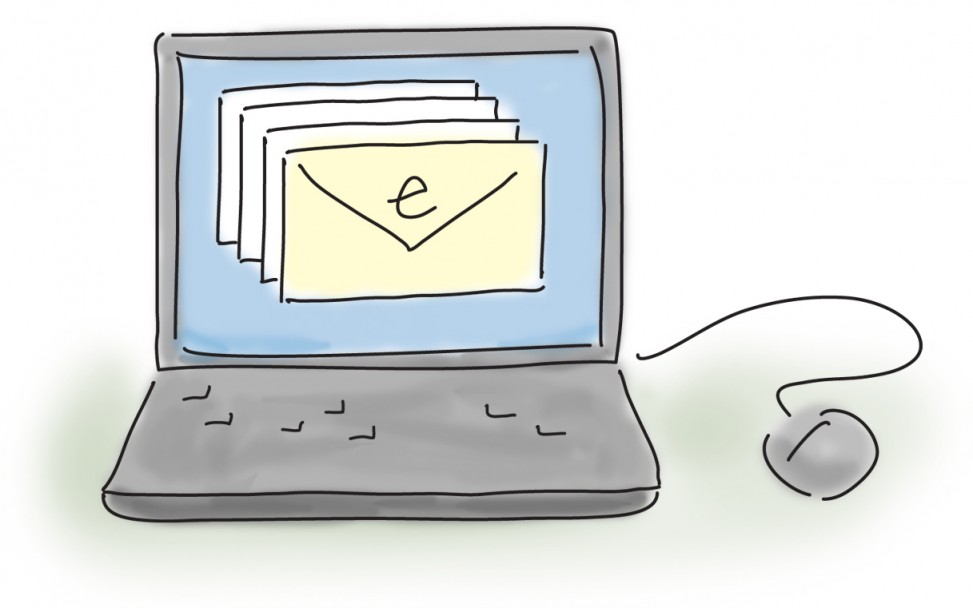In workshop many years ago, poet, essayist, naturalist, and activist Gary Snyder shared that he devoted an hour each morning to correspondence, paper and email, as part of his writing practice. It was through Gary’s teachings that I first came to understand poetry as a practice of attention, and a recursive process that’s actualized in performance and in community. Making time to write letters daily was about caring for friendships, thinking with others, and creating rhythms for work.
Last April, inspired by conversations about creative space and overwhelm with Rebecca Petzel and Pete Forsyth and reminded of Gary’s correspondence hour, I designed on my own hack of Tony Hsieh’s Yesterbox technique.
Email Timebox
This practice helps reduce overwhelm and rescues the joy of correspondence from the noise of email. The optional items can be helpful scaffolding when beginning the practice, to combat anxiety.
- Turn off all desktop and mobile notifications, badges, and close email app.
- Schedule 1 hour* every workday for email; I like 1-2 PM**. Calendar it!
- (Optional) At the start of each day, scan inbox. Read a few emails if desired, but don’t respond. Don’t allow more than 5 minutes for this.
- Create a Correspondence List. Throughout your day, when you think of emailing someone, instead of doing it immediately, add it to your list.
- At the scheduled hour, read your email***. Archive anything that doesn’t require response. Bookmark newsletters and articles to read later.
- Review the remaining emails in your inbox, estimate the time needed to respond to what’s important and urgent.
- Write emails from your Correspondence List, prioritizing what’s important and what’s urgent, reserving time to respond to emails in your inbox.
- Respond to emails. Archive emails after responding.
- At the end of the hour, if the inbox is empty, celebrate!
- Even if my inbox is not empty, I have handled what needs to be done today. What’s left stays in the inbox, to roll over to the next day’s correspondence block.
- (Optional) In the last hour of each workday, scan inbox. Read a few emails if desired, but don’t respond. Don’t allow more than 5 minutes for this. If you feel the urge to respond, consider whether it could wait until the next day’s designated time. Chances are, it can.
* One hour is usually sufficient for my normal email correspondence. However, depending on the norms of your network and profession, you may receive more email I do and may therefore need to schedule a longer correspondence block.
** I choose early afternoon for two reasons: I want to reserve the first hours of each day for creative work. And if there truly is something urgent, I can still respond before end-of-day.
*** I find Gmail’s inbox categories essential for separating primary mail from forums, newsletters, promotions. You could create your own filters if you don’t use Gmail.
In the first days, I felt the urge to check email, that sly tug, almost continuously. But by the second week, it was already diminishing. I began to look forward to my afternoon email as a time for connection, instead of a chore or guilty time sink.
I’m still timeboxing my email, almost a year in. Although I don’t adhere to my own rules perfectly, the practice has helped quiet the overwhelm and protects my creative cycles when I need them.
Let me know if you try it. I’d love to hear how it goes!


Pete Forsyth
Gary Snyder was a Reedie… And enjoyed the Mt. Hood wilderness that’s one of my favorites. The way he approached his work in and after college is especially inspiring/resonant for me. This would be good advice no matter the source.. But I like that it originates with him. Thanks for an enjoyable and useful post… And for the shout-out!
PS, reminds me of a bit of Hemingway advice: he wrapped up his writing every day not when he was out of things to say, but when he knew exactly what he wanted to write next. So he had a head start the next day … Instead of writers block.
Pete
Amy Wu
I was lucky to have studied with Gary as an undergrad. He has been a dear friend these many years and sage guide, with a light touch.
Thanks for reminding me about Hemingway’s advice. The other part, not thinking about the story when you aren’t working, is profoundly valuable—and really hard for me. When I’m deep in something my brain doesn’t want to turn away.